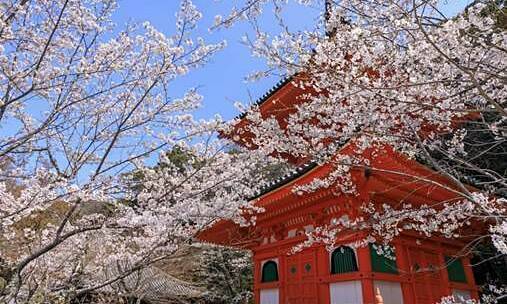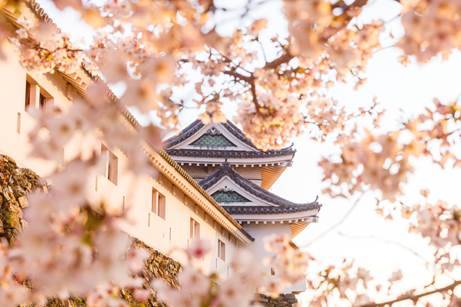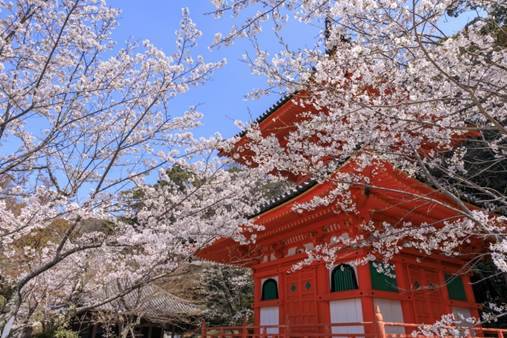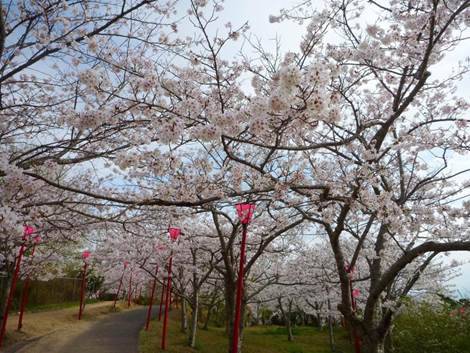#banryutei
Explore tagged Tumblr posts
Photo

… 高野山金剛峯寺だす。何回も高野山行ってるけど、金剛峯寺の中は初めてでテンションあがります。 蟠竜とはトグロ巻いた龍のようですね。蟠りとは「わだかまり」とも読むんですねぇ。。 #高野山 #koyasan #金剛峯寺 #kongobuji #和歌山 #雨の高野山 #蟠龍庭 #蟠龍庭石庭 #banryutei #banryuteirockgarden (高野山金剛峯寺) https://www.instagram.com/p/CURYjNph7LC/?utm_medium=tumblr
1 note
·
View note
Photo

Banryutei Rock Garden. A pair of dragons emerging from a sea of clouds. — view on Instagram http://ift.tt/2pxRKea
2 notes
·
View notes
Text
4 nơi ngắm hoa anh đào nở ở Wakayama
New Post has been published on https://khachsanthanhdong.com/4-noi-ngam-hoa-anh-dao-no-o-wakayama.html
4 nơi ngắm hoa anh đào nở ở Wakayama

Tại tỉnh Wakayama, Nhật quý khách dạng, từ cuối tháng 3 – giữa tháng 4 có hoa anh đào nở rực khắp phố phường, báo mùa xuân về. Với người dân Wakayama, hoa anh đào là món vàng ý thức, mang tới thú vui và may mắn dịp đầu năm. Để ngắm hoa anh đào, người dân thường tới 4 nơi sau:
Thành Wakayama
Thành Wakayama được xây dựng trên núi Torafusuyama, trung tâm TP Wakayama. Tòa thành xây dựng lần trước tiên theo lệnh của lãnh chúa Toyotomi Hideyoshi vào năm 1585. tới thời đại Meiji, thành bị phá hủy một phần. Sau đó, trải qua chiến tranh toàn cầu lần 2, thành Wakayama đãbị thiêu cháy. Sau chiến tranh, thành được tái khôi phục và được giữ gìn tới ngày nay và trở thành nơi người dân Wakayama tới vui chơi và dạo bộ.
Thành Wakayama còn có tên gọi khác là Torafusu-jo nếu lấy theo tên của ngọn núi. Đứng trên tháp canh trong tòa thành sẽ nhìn được toàn cảnh TP cùng con sông Kinokawa xung quanh thành. Vào mùa xuân, thành Wakayama được 600 cây hoa anh đào bao bọc. Hoa nở rực rỡ từ cuối tháng 3 tới giữa tháng 4.

Hoa anh đào nở trong Thành Wakayama.
Chùa Kimiidera
Chùa Kimii-dera còn được gọi là Kimiisangohoji Gokokuin, xây dựng vào năm 770. Trải qua những thăng trầm của nhiều triều đại khác nhau, tới nay ngôi chùa còn lưu giữ rất nhiều cổ vật. Trong sân chùa có 3 giếng nước với mạch nước ngầm tinh khiết: Shojosui, Kisshosui, Yoryusui. Ngôi chùa này được tiến công giá là 1 trong 100 nơi có nguồn nước sạch sẽ nổi tiếng Nhật quý khách dạng.
Trong khuôn viên chùa trồng khoảng 500 cây hoa anh đào. Kimii-dera nổi tiếng là nơi có hoa anh đào nở sớm ở vùngKansai.

Chùa Kimii-dera có hoa anh đào nở sớm.
Công viên Heisogen
Nằm tại thị trấn Shirahama, công viên Heisogen trồng khoảng 2.000 cây hoa anh đào Yoshino. Mỗi mùa hoa anh đào, công viên rợp sắc hồng của cánh hoa. Giống anh đào Yoshino có mùi thơm, từ công viên mùi hoa bay lan sang thị trấn.
Bên trong công viên có sân thể thao rộng để tổ chức lễ hội hoa anh đào vào hàng năm. Lễ hội thường có các gian hàng thực phẩm cùng những đèn chiếu sáng để du khách ngắm hoa anh đào vào đêm tối.

tới công viên Heisogen, du khách có thể ngắm hoa anh đào vào đêm tối.
Đền Kongobuji
Toyotomi Hideyoshi xây dựng vào năm 1593, sau đó được sát nhập với đền phụ cận trở thành ngôi đền trước tiên của Phật giáo Shingon. Bên trong ngôi đền có các tòa nhà với các lớp cửa được trang trí sống động. Tòa nhà chính bên trong ngôi đền Kongobuji được sử dụng để tiếp các vị khách quý, trên tường và cửa trượt được mạ vàng và trần nhà có hoa chạm khắc.
Đằng sau tòa nhà có vườn đá Banryutei, xây dựng vào năm 1984. Những tảng đá lớn trong vườn được lấy từ Shikoku, nơi sinh của Kobo Daishi biểu tượng cho một cặp rồng nổi lên từ một đại dương mây. Trong khuôn viên đền trồng rất nhiều cây hoa anh đào rủ màu hồng đậm tỏa sắc cho ngôi đền.
(Nguồn: Trung tâm giao lưu thông tin Du lịch Nhật quý khách dạng JTICC)
Info: https://khachsanthanhdong.com/
0 notes
Text
Exploring Koya-San
We decide to visit two main temple complexes, first, we visit Garan, the central temple complex, at the place where Kobo Daishi reputedly threw his three pronged Buddhist ‘mace’ from China and it lodged in a pine tree on Mount Koya. Simple!
From our monastery we walk along the high street of the town and then up a beautiful straight paved alleyway between the trees, gradually the huge Konpon Daito Pagoda comes into view, on the right behind more modest buildings. The ground is still littered with broken branches and piles of pine needles which are being swept up into high piles at intervals.
The Pagoda is painted vermillion and white and stands out starkly against the dark green of the pines, This latest incarnation dates from around 1985, rebuilt on the same site after yet another fire. It stands 45 meters tall, has two tiers, and contains a statue of the Cosmic Buddha, also known as Vairocana, the central Buddha in Shingon Buddhism, This stands between vermillion columns in the middle of the pagoda's interior and is surrounded by statues and paintings on pillars, which together make up a rare three dimensional mandala. The central space is defined by four columns in a square, this is surround by a further eight columns in a hexagon and in turn by another ring of twelve columns in a dodecagon, all enclosed within a 5 x 5 bay square external wall containing 20 columns a complete Fibonacci sequence and a mathematical mandala. A wonderfully direct structure, which transcends the practical issues and becomes a focused centralised space.
Next to it is the plainer darker cedar clad rectangular Kondo Hall, where major ceremonies are held. The building has burned down multiple times over the centuries, and the current hall dates from 1932. It enshrines an image of Yakushi Nyorai, the Buddha of medicine and healing.
Over time these two original buildings were added to around the grounds of the Garan with additional halls and pagodas. Amazingly despite the typhoon and many large fallen trees all the buildings have survived the storm, although there remains much to clear up.
We leave this complex and return towards the centre of town to the Kongobuji, the head temple of the Shingon sect, which is a more formal arrangement of interconnected buildings forming a city in miniature in it’s own.
Entered through the typical roofed gatehouse, and then turning and moving right across the white gravelled courtyard, you pay for the entrance ticket at the end of a long timber lined gallery running in front of a series of tatami rooms dived from each other with sliding doors, elaborately painted and gilded with scenes of nature, no photographs or sketches! At a point you turn and pass between these rooms, to the monastery kitchens which serve them at the back, there are huge rice cookers next to a swimming bath scale sink overflowing with clear water, and an enormous blackened pyramidal chimney above a black steel fire box, which passes upwards through the high ceiling and roof. The kitchen can serve food to 2000 people so they say.
Doubling back you continue along wooden lined corridors, until you are stopped by a narrow courtyard, with white gravel and carefully placed rocks, along one side of which you pass in the open air, and gaze tranquilly down onto the white sea and it’s miniature islands. At the end of the open gallery you enter a tunnel which continues slightly upwards with small opening to one side allowing views of trees. There is a blank wall at the end and you turn left.
At this point I was accosted by a monk who asked if he would be prepared to be interviewed and so began a long conversation with a Japanese Social Sciences student from Leuven University in Belgium, about the effects of tourism ( I initially thought the interview was about ‘terrorism’ until the term ‘tourist’ kept being pronounced more carefully. Koyasan has over 1 million visitors a year, has fewer and fewer young monks being trained at the University of Koyasan, 1990 -1000 students, 2018 - 200 students, so much of the traditional hospitality and running of the monasteries has had to be taken over by non-monks. Does tourism ruin the popular place? Is there such a thing as ‘good’ tourism?
Escaping after two fine cups of tea, the exploration continued of the remaining parts, another immaculate pair of the Banryutei gravel and stone gardens, depicting dragons emerging from the sea. See if you can make this out. surrounding another series of screened rooms, these rooms divided by a graphic series of black line on white paper drawings on sliding screens, (20th Century) of Kobo Daishi visiting China on a diplomatic mission and finally returning to Japan, much sorrow here, to found Koyasan. It’s quite a place.
Holly goes back to Ekoin and I walk up the hill out of town to see the oldest Stupa on Mount Koya built in 1123, which is very romantic and in need of some TLC, located as it is in the ground of another monastery which seems much less prosperous that some others. The location however is definitely a spiritual one with a fine backdrop of pine trees to the small clearing in which it reposes.
After a short rest we visit Okunoin's cemetery, the largest in Japan, with over 200,000 tombstones lining the almost two kilometre approach to Kobo Daishi's mausoleum. Wishing to be close to Kobo Daishi in death to receive salvation, many people, including prominent monks and feudal lords, have had their tombstones erected here over the centuries. This day the entrance was taped off, as clearing up work was still in progress, ( and will be for many weeks ), so we unable to get as far as the tomb, however the very special quality of tombstones and vegetation make for a dramatic and venerable site with juxtapositions of the various statues, lanterns, obelisks, grave markers and deities jostling one another for space between the enormous trees. The sheer scale is quite numbing and we had to stop at about the halfway point. In some instances a similarity with the giant heads on Easter Island was powerfully brought to mind.
0 notes
Photo

This is the Banryutei Rock Garden located on the grounds of Kongobu-ji temple, Mount Koya. At 2349 square metres, it is the largest rock garden in Japan. It surrounds a small but very important hall called the Okuden. 140 granite rocks are carefully positioned among the immaculately raked white sand. The rocks were imported from Shikoku, the place of birth of Kobo Daishi, the legendary Buddhist monk and founder of Shingon Buddhism, Kongobu-ji and indeed Koyasan. The white sand is from Kyoto. The rocks are laid out to resemble a pair of dragons emerging from the clouds to surround and protect the Okuden. The garden is a recent construction, having been designed in 1984. It also somewhat defies the convention of typical Zen gardens in that there doesn't seem to be one single position where you can view the whole garden at once. In order to see the Banryutei, one has to enter the halls of Kongobu-ji first. It can't be seen from the large courtyard in front of the temple as it is actually within a separate enclosure. The Okuden is closed to the public however, visitors can view the garden from the walkway surrounding the Butsuden, a large audience hall famous for its beauti screen doors featuring images of seasons, flowers and the story of Kobo Daishi, all painted by master painter, Moriya Tadashi. #japan #japanesehistory #japantravel #cooljapan #explorejapan #koyasan #wakayama #historynerd #historical #garden #日本 #高野山 #和歌山 #金剛峯寺 #庭園 #歴史 #蟠龍庭 (at Mount Kōya)
#wakayama#japan#蟠龍庭#historical#koyasan#historynerd#cooljapan#日本#庭園#japantravel#explorejapan#和歌山#高野山#garden#japanesehistory#金剛峯寺#歴史
0 notes
Text
Nature | autumn leaves at coiling dragon garden
Nature | autumn leaves at coiling dragon garden
Follow Us On Twitter If you looking for a good BOOK on PHOTOGRAPHY come and visit us at BookReviews.site! Our New Review Site on Photography Books and More! We are adding books every day! By kawamura Description from Photographer if any: “Banryutei” means coiling dragon garden, which is in Kongobuji at Kouyasan. Two dragons are represented by the stones in the garden. Source: 500px.com
View On WordPress
#autumn#autumn leaves#Banryutei#garden#Japan#Kinki Region#Kongobuji#Kouyasan#leaf#leaves#orange#red#Stone#temple#tree#yellow
0 notes